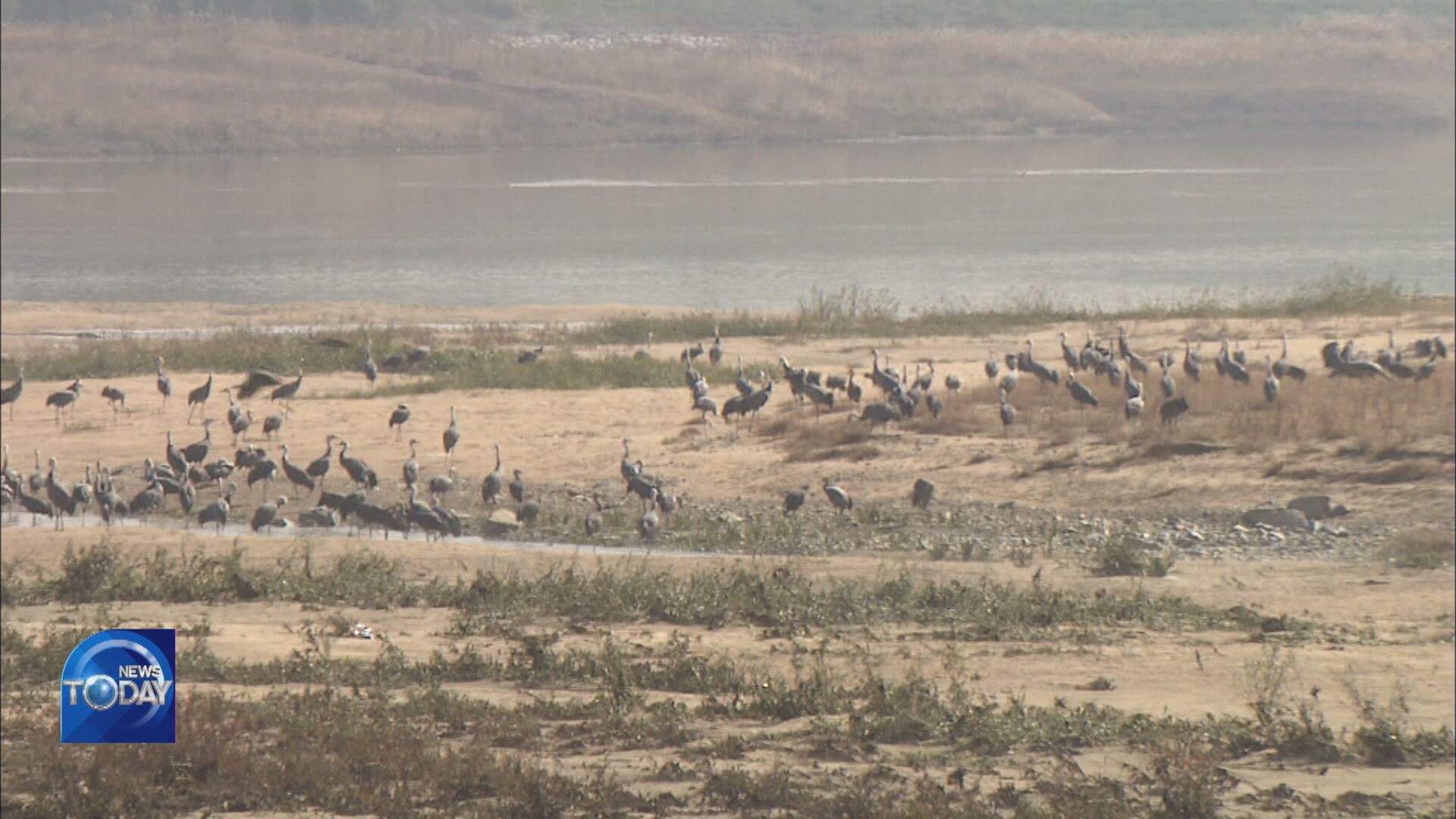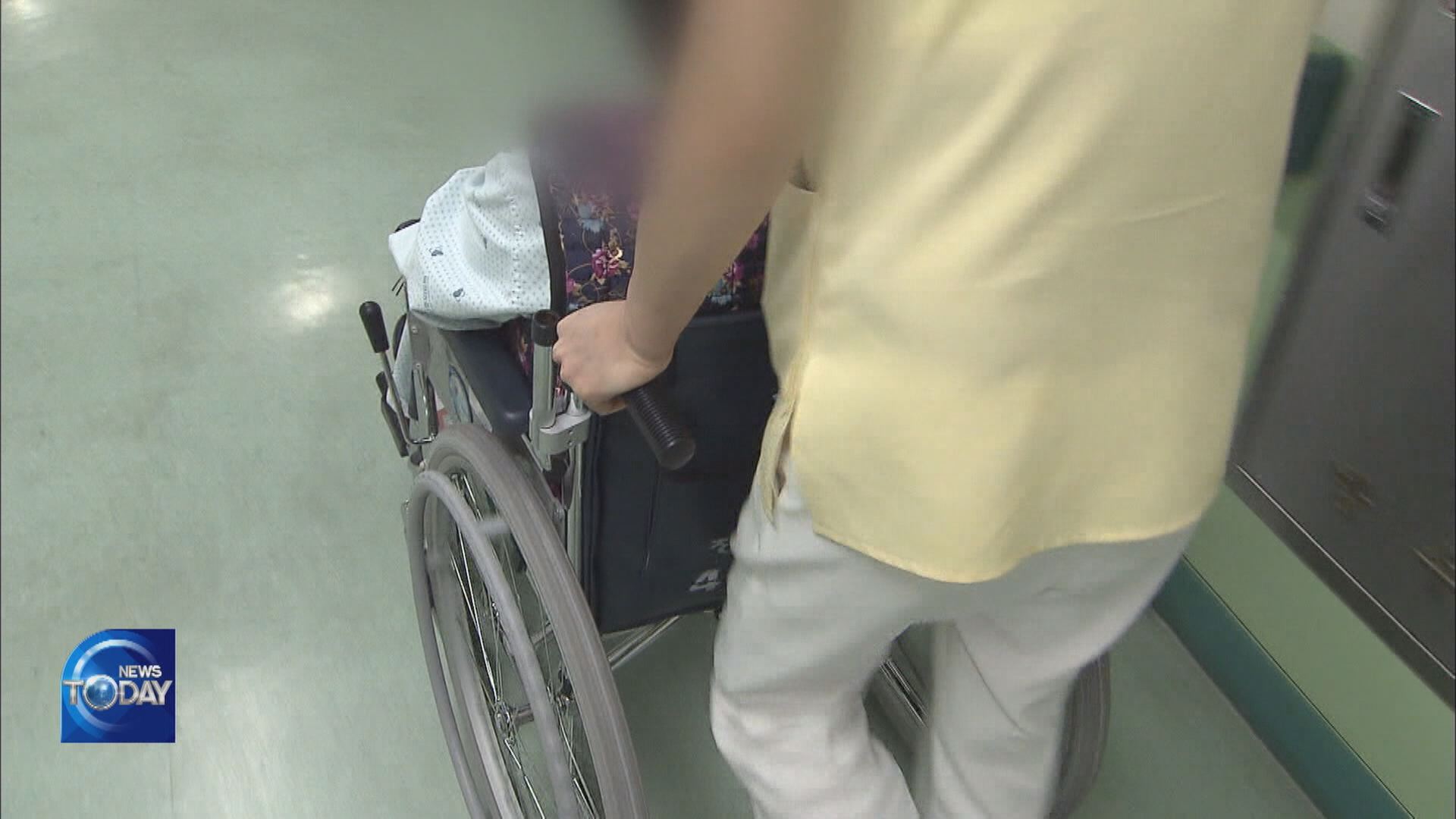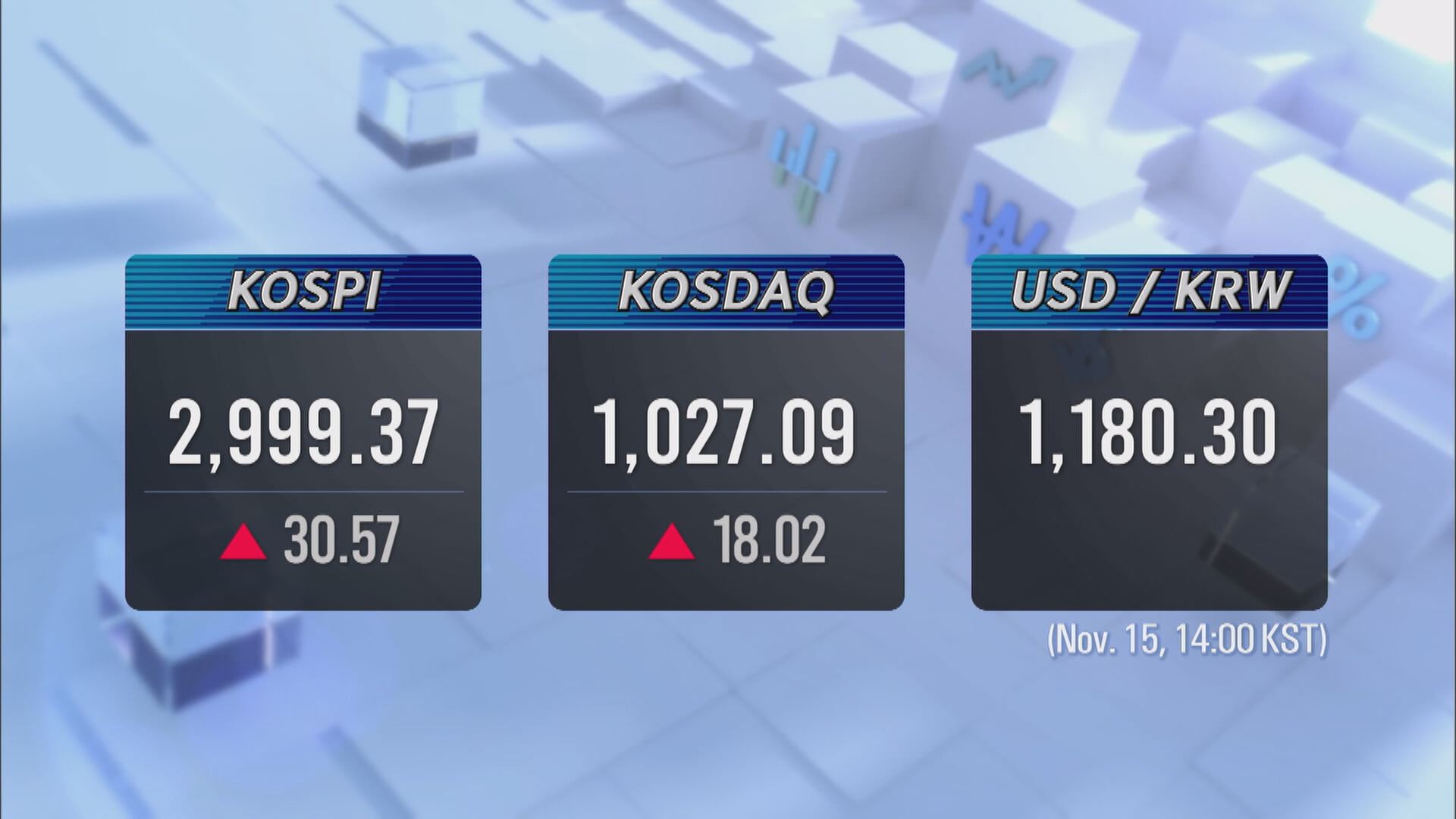DISAPPEARANCE OF HOODED CRANES
입력 2021.11.15 (15:12)
수정 2021.11.15 (16:45)
읽어주기 기능은 크롬기반의
브라우저에서만 사용하실 수 있습니다.
[Anchor Lead]
Korea’s endangered Natural Monument hooded cranes used to visit Haepyeong Wetland in the southeastern region of Gumi. But the rare birds stopped coming after the Nakdong-gang River dam was built. Experts have mixed opinions on the cause and solution of their disappearance.
[Pkg]
Flocks of hooded cranes numbering over one thousand used to create a spectacle at Haepyeong Wetland every autumn. But not a single crane can be found there anymore. More than two thousand hooded cranes visited the wetland back in 2014. But the number shrank to about 100 by 2019 and none were sighted last year. The sandy banks of Haepyeong Wetland were flooded, forcing the birds on their way to Japan to divert to the west coast.
[Soundbite] Han Seong-wu(Ornithologist) : "The shortest route is to depart from Cheorwon and stop by Haepyeong Wetland and the Nakdonggang River before flying to Izumi, Japan. The deterioration of the Haepyeong wetland environment has forced the birds to choose the long detour around Korea’s west coast."
Environmental groups say the Nakdonggang River dam’s sluice gates should be opened and the wetland restored to invite the birds back.
[Soundbite] Jeong Su-geun(Daegu Federation for Environmental Movement) : "In order to bring back hooded cranes, the sluice gates of the Chilgok Dam should be opened wide to create again a huge sand bar here."
But the environment ministry remains cautious because water supply for farmers may be disrupted once the sluice gates are opened and the water level goes down.
[Soundbite] Jeong Eui-seok(Official, Ministry of Environment) : "We are lowering the water level slowly given the potential damage to underground water used by nearby farms. This is the first time this year we’re opening the Chilgok Dam."
Hooded cranes have been forced out due to man-made environmental changes. Now is the time for humans to seek ways to coexist with nature.
Korea’s endangered Natural Monument hooded cranes used to visit Haepyeong Wetland in the southeastern region of Gumi. But the rare birds stopped coming after the Nakdong-gang River dam was built. Experts have mixed opinions on the cause and solution of their disappearance.
[Pkg]
Flocks of hooded cranes numbering over one thousand used to create a spectacle at Haepyeong Wetland every autumn. But not a single crane can be found there anymore. More than two thousand hooded cranes visited the wetland back in 2014. But the number shrank to about 100 by 2019 and none were sighted last year. The sandy banks of Haepyeong Wetland were flooded, forcing the birds on their way to Japan to divert to the west coast.
[Soundbite] Han Seong-wu(Ornithologist) : "The shortest route is to depart from Cheorwon and stop by Haepyeong Wetland and the Nakdonggang River before flying to Izumi, Japan. The deterioration of the Haepyeong wetland environment has forced the birds to choose the long detour around Korea’s west coast."
Environmental groups say the Nakdonggang River dam’s sluice gates should be opened and the wetland restored to invite the birds back.
[Soundbite] Jeong Su-geun(Daegu Federation for Environmental Movement) : "In order to bring back hooded cranes, the sluice gates of the Chilgok Dam should be opened wide to create again a huge sand bar here."
But the environment ministry remains cautious because water supply for farmers may be disrupted once the sluice gates are opened and the water level goes down.
[Soundbite] Jeong Eui-seok(Official, Ministry of Environment) : "We are lowering the water level slowly given the potential damage to underground water used by nearby farms. This is the first time this year we’re opening the Chilgok Dam."
Hooded cranes have been forced out due to man-made environmental changes. Now is the time for humans to seek ways to coexist with nature.
■ 제보하기
▷ 카카오톡 : 'KBS제보' 검색, 채널 추가
▷ 전화 : 02-781-1234, 4444
▷ 이메일 : kbs1234@kbs.co.kr
▷ 유튜브, 네이버, 카카오에서도 KBS뉴스를 구독해주세요!
- DISAPPEARANCE OF HOODED CRANES
-
- 입력 2021-11-15 15:12:07
- 수정2021-11-15 16:45:05

[Anchor Lead]
Korea’s endangered Natural Monument hooded cranes used to visit Haepyeong Wetland in the southeastern region of Gumi. But the rare birds stopped coming after the Nakdong-gang River dam was built. Experts have mixed opinions on the cause and solution of their disappearance.
[Pkg]
Flocks of hooded cranes numbering over one thousand used to create a spectacle at Haepyeong Wetland every autumn. But not a single crane can be found there anymore. More than two thousand hooded cranes visited the wetland back in 2014. But the number shrank to about 100 by 2019 and none were sighted last year. The sandy banks of Haepyeong Wetland were flooded, forcing the birds on their way to Japan to divert to the west coast.
[Soundbite] Han Seong-wu(Ornithologist) : "The shortest route is to depart from Cheorwon and stop by Haepyeong Wetland and the Nakdonggang River before flying to Izumi, Japan. The deterioration of the Haepyeong wetland environment has forced the birds to choose the long detour around Korea’s west coast."
Environmental groups say the Nakdonggang River dam’s sluice gates should be opened and the wetland restored to invite the birds back.
[Soundbite] Jeong Su-geun(Daegu Federation for Environmental Movement) : "In order to bring back hooded cranes, the sluice gates of the Chilgok Dam should be opened wide to create again a huge sand bar here."
But the environment ministry remains cautious because water supply for farmers may be disrupted once the sluice gates are opened and the water level goes down.
[Soundbite] Jeong Eui-seok(Official, Ministry of Environment) : "We are lowering the water level slowly given the potential damage to underground water used by nearby farms. This is the first time this year we’re opening the Chilgok Dam."
Hooded cranes have been forced out due to man-made environmental changes. Now is the time for humans to seek ways to coexist with nature.
Korea’s endangered Natural Monument hooded cranes used to visit Haepyeong Wetland in the southeastern region of Gumi. But the rare birds stopped coming after the Nakdong-gang River dam was built. Experts have mixed opinions on the cause and solution of their disappearance.
[Pkg]
Flocks of hooded cranes numbering over one thousand used to create a spectacle at Haepyeong Wetland every autumn. But not a single crane can be found there anymore. More than two thousand hooded cranes visited the wetland back in 2014. But the number shrank to about 100 by 2019 and none were sighted last year. The sandy banks of Haepyeong Wetland were flooded, forcing the birds on their way to Japan to divert to the west coast.
[Soundbite] Han Seong-wu(Ornithologist) : "The shortest route is to depart from Cheorwon and stop by Haepyeong Wetland and the Nakdonggang River before flying to Izumi, Japan. The deterioration of the Haepyeong wetland environment has forced the birds to choose the long detour around Korea’s west coast."
Environmental groups say the Nakdonggang River dam’s sluice gates should be opened and the wetland restored to invite the birds back.
[Soundbite] Jeong Su-geun(Daegu Federation for Environmental Movement) : "In order to bring back hooded cranes, the sluice gates of the Chilgok Dam should be opened wide to create again a huge sand bar here."
But the environment ministry remains cautious because water supply for farmers may be disrupted once the sluice gates are opened and the water level goes down.
[Soundbite] Jeong Eui-seok(Official, Ministry of Environment) : "We are lowering the water level slowly given the potential damage to underground water used by nearby farms. This is the first time this year we’re opening the Chilgok Dam."
Hooded cranes have been forced out due to man-made environmental changes. Now is the time for humans to seek ways to coexist with nature.
이 기사가 좋으셨다면
-
좋아요
0
-
응원해요
0
-
후속 원해요
0

















이 기사에 대한 의견을 남겨주세요.